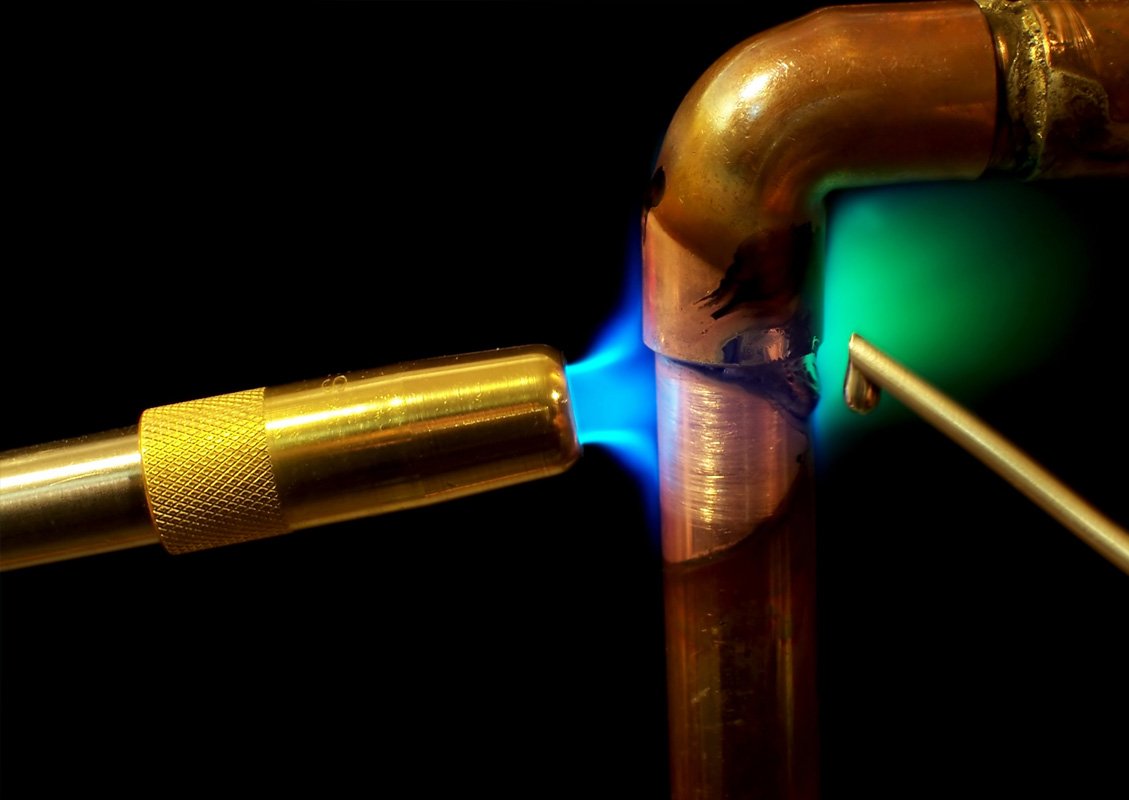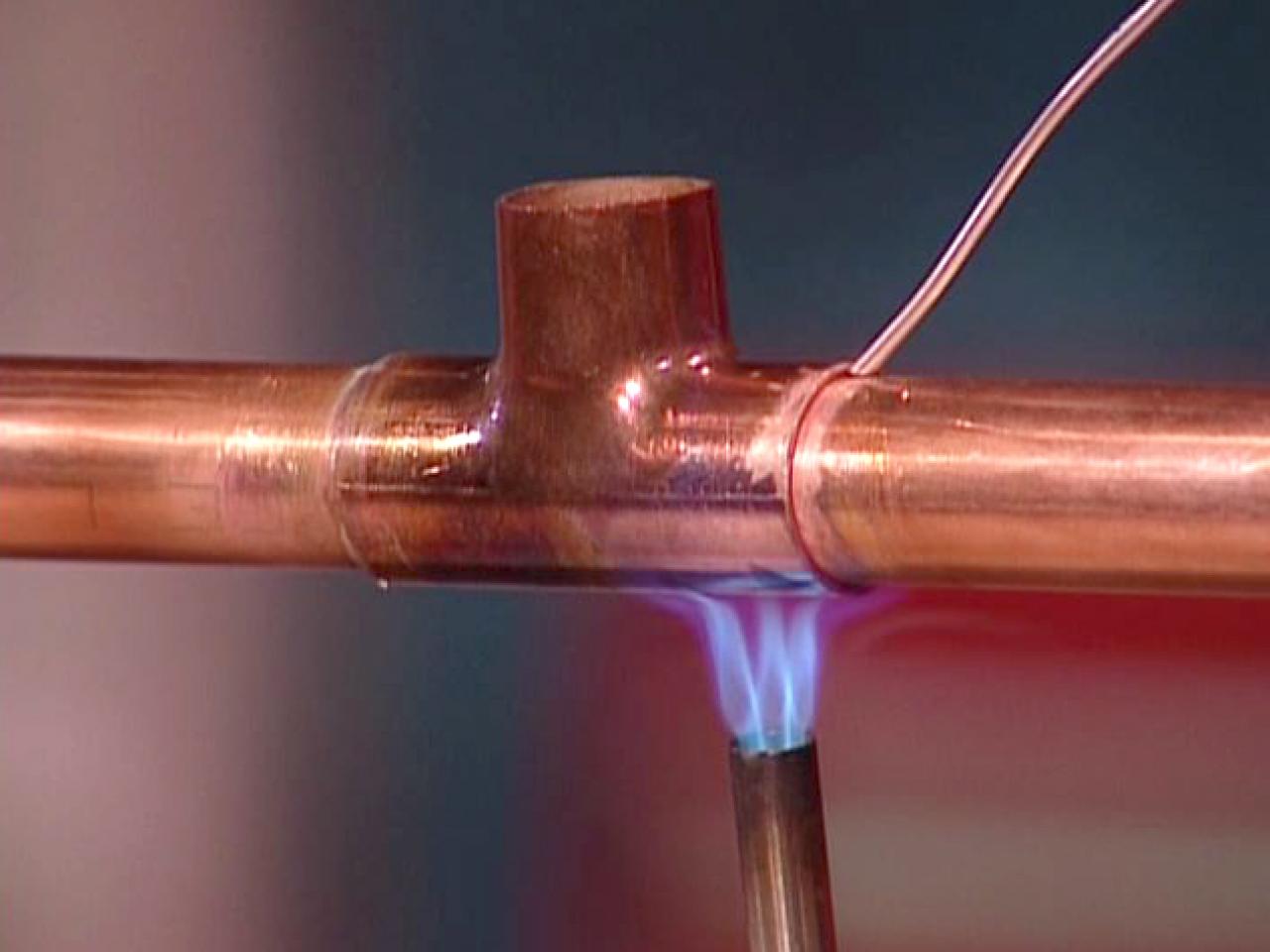The Lead Free Plumbing Solder: Reliable and Affordable Pipe Soldering Solution
Lead free plumbing solder is ubiquitous in all modern plumbing applications. It has earned its position after government bodies throughout the US and later in other parts of the world banned the use of lead in the plumbing industry.
Lead was the dominant element in water plumbing systems until the last century. But the developments in science and research highlighted the health risks associated with lead water pipes and plumbing solders. After which the efforts to develop lead-free solders for water plumbing applications picked up the pace.
Because the lead free plumbing solders are here to stay. We decided to dedicate this article to explain what they are, why you should be using them. And to discussing other features of lead-free solders for plumbing.

Soldering with a Lead Free Plumbing Solder
Common lead solders that the water plumbing facilities used were composed of 50% tin and 50% lead. But after the governments restricted the use of lead anywhere near potable water. Lead free plumbing solder started its journey towards popularity in the potable water industry.
Lead free plumbing solder comprises tin as the key element, along with either antimony or silver. Antimony and Silver both, when alloyed with tin, enhance its reliability as a solder and polish its mechanical performance. Therefore, lead free solders are more reliable and are stronger than typical lead solders.
Lead Free Solders for Plumbing: The Soldering Approach
A common feature of lead free solders, whether for plumbing or electrical soldering, is that they melt at a higher temperature. Their high melting point is courtesy of the presence of high melting metals and semi-metals such as silver and antimony.
Because lead free solders melt at a higher temperature, they require a special working approach for plumbing soldering. The unique approach for soldering with lead free plumbing solders is not complex for the experienced solderers.
However, if you continue soldering lead free solders the same way as you do with lead-based solders. Prepare to see your solder joints fail before you expect.
Lead Free Solders for Plumbing: The Soldering Process
Plumbers and solderers select lead free solders for plumbing based on three broad factors. These include ease of use, service conditions, and the installation and operational cost.
When talking about the pipe soldering process, we find plumbers reminiscing how lead solders were easier to use and would flow better.
Lead-free solders for plumbing systems can feel different to use, however, they can offer the same ease of use and depict the same flow properties as that of typical lead solders if the solderer has the right expertise.
As we mentioned above, lead free plumbing solder melts at a higher temperature. Because of its high melting point, it offers a very small working window in which it exists in the right liquid consistency and before the high temperature decomposes the solder flux.
Therefore, soldering with lead free solders requires vigilance and this is why some people find this process difficult.
Lead Free Solders and Pipe Joints
In a typical pipe soldering job, two pieces of pipes are soldered together to elongate them and ensure that there is no water leakage from the joint. For this, they use solders, flame torches, and fluxes.
Pipe joints usually have capillaries that the solder needs to fill and then bind the two pieces of pipe together. These capillaries are usually only 0.002 or 0.006 inches wide and lead free plumbing solders do a reasonable job of filling them up, joining them together, and preventing any leakages.
However, for capillaries wider than 0.006 inches, seasoned plumbers and soldering experts suggest brazing- the big brother of soldering.
Plumbing flux
Soldering flux, which is called the plumbing flux or plumber’s flux for plumbing applications, is a compound that aids the process of soldering and enhances its results.
There are two common types of fluxes: the rosin-core flux and the acid-core flux. Plumbing applications necessitate that you use solders with an acid-core flux.
The acid from the acid-based flux cleans the pipe surface of contaminants and dirt. Thereby, allowing the molten solder to flow more freely over the metal surface and adhere more strongly to it.
Moreover, since soldering occurs at high temperatures, it exposes copper to the risk of oxidation. Flux covers the copper pipes and seals the surface from air to prevent oxidation and the consequent contamination of the metal.
The acid-based flux used for plumbing application comes in a paste-like texture. It is usually water-soluble so you can easily clean it with water and a piece of cloth to prevent corrosion from left-over flux.
Plumbing Solder vs Electric Solder: Is There A Difference?
If you are planning to use your typical electric solders for a pipe soldering job, prepare to be disappointed with the results.
The basic difference between a lead free plumbing solder and an electric solder is the flux. If you use an electric solder for a pipe soldering project, you will get a rosin-core solder. Rosin-based flux is a non-acidic, non-abrasive, mild flux that cannot remove oxidants from the metal. Therefore, the solder will flow over contaminated metal and will fail to adhere to the metal surface properly.
Moreover, most people still use lead-based electric solders. Hence if you use those solders for pipe soldering, not only will you go against the law, but you will also put the recipients of the water that flows through those pipes at risk.
Why Use Lead Free Plumbing Solder?
The whole world is using lead-free solders for soldering potable water pipes and joints. But if you are still not convinced of their necessity in plumbing applications, here are a few points to convince you:
Health Risks of Lead
Everyone knows lead is harmful to health. We have eliminated them from wall paints, but why do they need to go from water pipes? It is not that we are ingesting that lead.
Water pipes soldered with lead solders may seem harmless. But soft and acidic water leads to pipe corrosion. And once pipes are corroded, the exposed lead to the flowing water which in turn leads to lead-leaching into the water that flows into your house. And that your drink.
In this way, lead pipes and lead-based solders become a source of lead that goes into the human body via drinking water and results in severe lead-consumption-induced health consequences in the long run.
The environmental protection agency of the US, EPA, has zero tolerance for lead in drinking water because of the health risks associated with lead leaching.
The biggest benefit of using lead free plumbing solders, pipes, and joints is that, since they do not contain lead, hence they pose no health risk for people who consume water that flows through these pipes and joints.
Lead Free Solder Joints are Reliable
Plumbing joints made with lead free solders such as Sn-Sb solder or Sn-Ag solder are stronger and more reliable. Because of their strength, these solder joints can withstand high temperature and pressure. Hence, they are often preferred in high-rise piping systems, high-temperature applications, and commercial refrigeration and AC applications.
The Cost of Lead-Free Solders
There is no denying the fact that lead free solders are more expensive than lead-based solders. Tin-Antimony solders come at a price that is twice more than the price of lead solders. While Tin-silver solders are four-times as expensive because of the presence of silver.
However, lead-free solders can make up to 25% more joints with the same quantity as that of lead-based joints. That means if, for example, a lead-based solder makes 100 joints, a lead-free solder will make 125 joints. And in this way, lead free plumbing solder compensates for its higher price and becomes comparable, if not more affordable, to the lead solders.

Conclusion
The electric soldering industry still has some tolerance for lead-based solders. However, the plumbing industry does not allow any solder other than lead free plumbing solder because of the risk of lead leaching and its potential health hazards.
Lead free plumbing solder makes more reliable solder joints and is more affordable than lead-based solders when used for an entire project.
All you need to do to ensure that the lead free solder joint is indeed reliable is to handle the lead free soldering job with care and approach it the right way. And voila! You’ve got yourself a stronger and safer plumbing joint.
For More Information, Contact Us Today!




